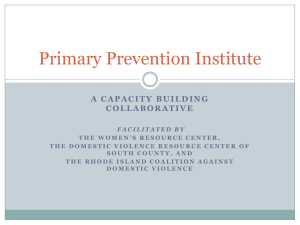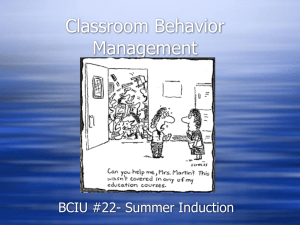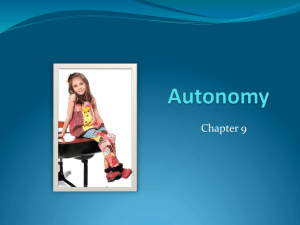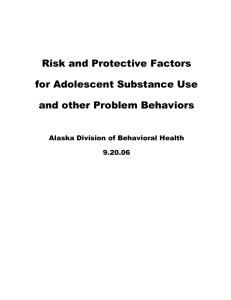Chapter 7 overview
advertisement
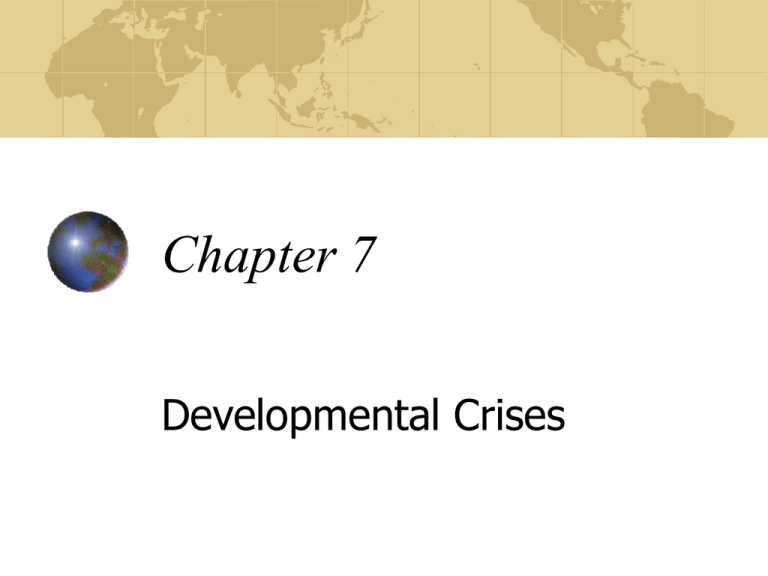
Chapter 7 Developmental Crises Developmental Crisis 1. Normal, expected, and often occur as we transition from one psychosocial stage of development to another. 2. Erikson proposes psychosocial tasks which can precipitate a crisis. Infancy: Trust vs. mistrust Toddlerhood: Autonomy vs. Shame and Doubt Preschool Years: Initiative vs. Guilt Middle School Years: Industry vs. Inferiority Adolescence: Identity vs. Role Confusion Young Adulthood: Intimacy vs. Isolation Middle Adulthood: Productivity vs. Stagnation Maturity: Integrity vs. Despair Evolutional Crisis 1. Often occur as family structures change and adjustment in role functions are required. 2. Minuchin offers the idea of subsystems and the need to meet evolving needs of family members as possible stages where crisis occurs. Subsystem Adjustment A. Marital B. Parental C. Grandparent D. Siblings Boundaries Role Families of Origin Spouse Children Parent Adult Child and Grandchild Grandparent With Parents. Hierarchy Adolescent Crises Needs for individuation and identity may lead to risky behaviors. Need both autonomy and nurturance Failing family structures may lead to self-destructive behaviors Either too controlling or to lax may lead to some of the following issues Teen Pregnancy About 433,000 teens gave birth in the U. S. in 2002. Highest rate in the industrialized world, California has the highest rate in the country. Often linked to dropping out of high school, dependence on welfare, substance abuse, child abuse, domestic violence, and unemployment Interventions Clinics and residential facilities have been created to meet the needs of this group. Can go to school Learn parenting skills Parents may be available to help May provide information about adoption and abortion agencies Gangs Gangs exist in most cities in the U. S. 84% of larger cities have gang problems 640% increase in reported gang problems in the past 30 years. Factors associated with gang involvement Family dynamics, self-concept, & societal stresses Parental neglect, abandonment, family dysfunction Low self-esteem, absence of personal safety and adult guidance, social alienation and boredom, lack of job opportunities Intervention Prevention is key: it’s harder to intervene once child is in a gang Education at elementary school level Educate community and encourage involvement Educate parents Create programs in community that expose at risk kids to social activities Runaways About 1,682,900 youths run away a year Some are thrown away. Ages 15-17 make up the majority of runaways Why? Achieve autonomy, unable to establish a mature identity, sexual and physical abuse, substance abuse Interventions Teen shelters: provide crisis intervention to teen and the family Teach effective communication skills, and address the need for autonomy Cultural differences must be recognized and compromise sought Family therapy is the model rather than blaming the teen Deparentifying the teen may be helpful Eating Disorders Teenage girls make up 90-95% of those with eating disorders 7 million females and 1 million males 86% of girls develop before age of 20, 10% before age of 10!, 33% between the ages of 11 and 15. Usually white and middle or upper class. Types of eating disorders Anorexia Nervosa: intense fear of gaining weight, refusal to maintain adequate nutrition, erroneous complaints of being fat, loss of original body weight at least to a level 85% of that expected based on norms, disturbance of body image and absence of at least 3 menstrual periods. Bulimia Nervosa: binges on high-calorie food then engage in self-induced vomiting, taking laxatives and overexercising. Take great efforts to conceal behaviors. Characteristics Emotionally reserved and cognitively inhibited Prefer routine and order Conforming and show deference to others Avoid risk, react to stress with strong feelings of distress Focus on perfectionism, negative self evaluation and fears of becoming an adult Intervention If life-threatening, need physician involvement and perhaps hospitalization Assess for suicide Family involvement: must face the seriousness of the condition Explore her role in the family, her identity as a growing woman and needs for individuation Crises of Old Age Nearly 36 million elderly people in the U. S., over 12% of the population. It is expected to almost double in 25 years. Alzheimer’s Disease and general senility 4 million afflicted Progressive degeneration of the brain Impaired memory, thinking and behaviors. Personality changes and inability to care for oneself require caretakers Caretakers often seek crisis intervention because of the emotional drain. Feel guilty to put parents in a facility, but may have to. Respite care is available through the Alzheimer’s Association Knowledge of resources is vital




